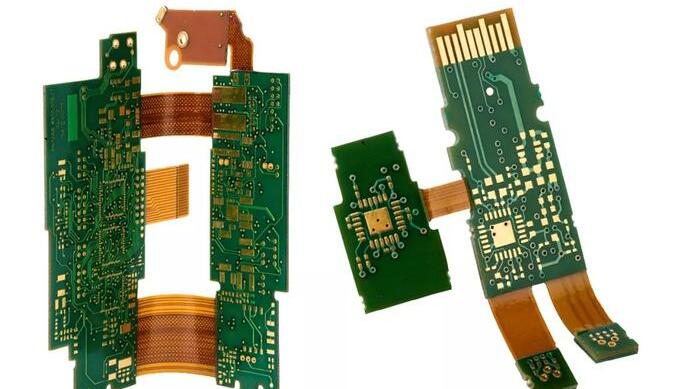Rigid-flex PCB stack-up is a type of PCB with both rigid and flexible layers. It is a PCB component composed of three or more layers of rigid and flexible materials bonded together. Rigid substrates are used to provide mechanical strength for circuit boards. At the same time, additional flexible circuit substrates help prevent heat, vibration, and even humidity.

Features of rigid-flex PCB stack-up
1. Fewer solder joints and connectors
Rigid-flex stack-up has the characteristic of fewer solder joints and connectors than traditional printed circuit boards. This means that it reduces the risk of welding errors, which may lead to expensive rework of flexible PCB parts or even circuit failures.
2. Minimum board thickness
These rigid flex plate technologies use thin films to achieve effective plate thickness reduction without affecting quality or reliability. The thickness of this board varies from 0.2mm to 0.4mm, making it more durable.
3. High thermal strength
Rigid-flex PCBs have better heat dissipation and higher reliability than typical rigid board environments.
4. High Aspect Ratio
A high aspect ratio refers to a situation where the width is greater than the height. It allows for more space between each component on the circuit board, which helps with signal transmission. In addition, a high aspect ratio not only allows for more space between tracks but also allows for easier wiring of wires and other components.
Advantages of Rigid-flex PCB stack-up
Rigid and flexible design not only gives flexible circuit boards 3D freedom, which is now the standard specification, but also has other benefits such as reduced maintenance and more uniform electrical configuration. Rigid and flex-printed circuit boards also promote optimized shell solutions.
1. Better durability and flexibility
Flexibility and durability are key components of PCB stackup. The flexibility of PCB stackup also depends on the number of layers and the type of material used in the PCB.
The goal of rigid-flex stacked PCBs is to reduce the strain on the PCB that may cause damage to the circuit board. Rigid and flexible PCBs also have excellent mechanical properties, good dielectric properties, and a wide operating temperature range, making them more durable.
2. Space saving
Space saving is one of the most important factors in rigid and flexible design. Save space, reduce production costs, and stack rigid PCBs. Its thin and wide surface area allows for complex circuit implementation without sacrificing the efficiency of flexible circuits.
The combination of rigid and flexible components is a method of enhancing the overall structure of PCB boards through the combination of rigid and flexible components. The combination of rigid and flexible technology can effectively improve the bending stiffness and flexural performance of PCB boards, making them more stable and reliable during operation.